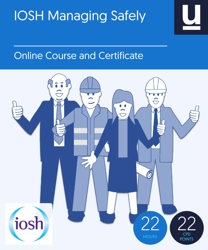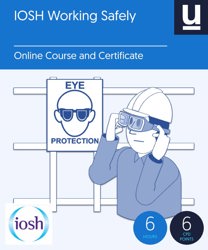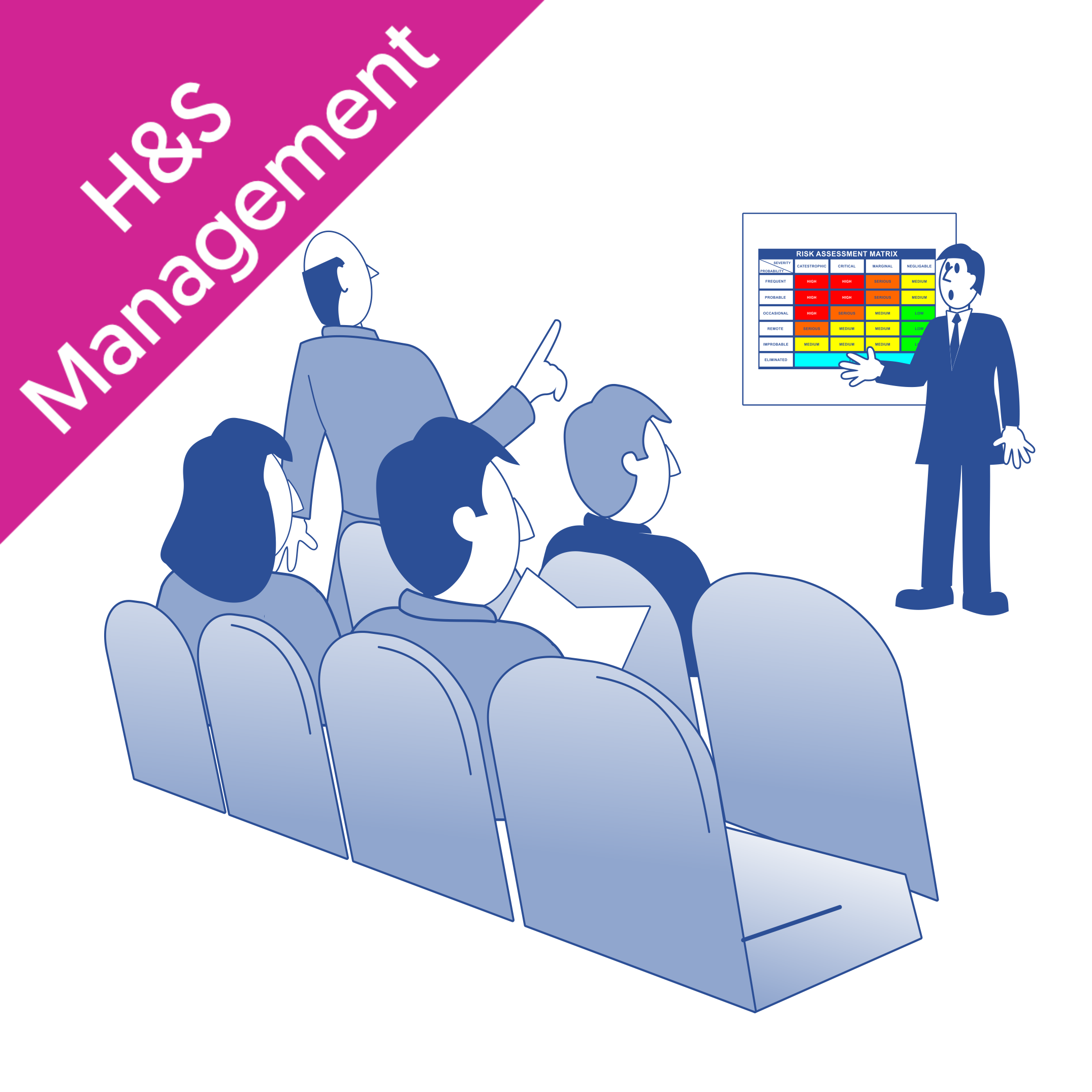The IOSH Managing Safely course is the market-leading health and safety management course. It is designed to teach learners about the basics of health and safety, and provide them with the skills and confidence required to work safely and manage workplace risks.
At Commodious, we offer this IOSH Managing Safely online course for a market-leading price of £125 + VAT. This also comes with a free five course bundle of your choosing.
In order to receive an IOSH Managing Safely certificate, learners must complete the following:
- The course's learning materials, which are split into seven modules.
- A multiple-choice question paper.
- A practical risk assessment project.
In this guide, we will look at the practical risk assessment project in detail and provide information on how to successfully complete one.
What is the IOSH Managing Safely practical risk assessment?
The IOSH Managing Safely risk assessment is a practical project that forms part of the IOSH Managing Safely course assessment. It requires you to complete a short risk assessment in a workplace of your choice, which should be your own where possible.
While a normal risk assessment will require you to identify as many hazards as possible, this project only requires you to identify four. These hazards will vary depending on the workplace, but may include using hazardous substances, or frequently carrying out tasks that involve manual handling.
For each of the four hazards, you need to list:
- Who might be harmed by the hazard and how.
- What the existing control measures are.
- The current risk rating.
- The additional controls that could be put in place.
- How these controls change the risk rating.
- Who will implement the additional controls and when they will do so.
We will look at how to complete the risk assessment project in more detail later.
How long does the IOSH Managing Safely practical risk assessment take?
Your risk assessment project must be submitted within 14 days of completing the course and the question paper. It should take you no longer than 2 hours to complete, but you are free to spend as long as you like on the project as long as it is returned within this time.
We recommend that you work through the assessment in one go, and then return to it a few days later to review it and make any necessary changes before submitting it to us.
What are the stages of the IOSH Managing Safely practical risk assessment?
Top of the form (1 mark)
This section is fairly self-explanatory. It requires you to fill in your name, the date and time of the assessment, and a brief description of the work area and the task being assessed.
When describing the work area and task being assessed, make sure you are specific when doing so. For example, third floor office space used by up to 30 people, 700 square metres, or use of forklift truck to move goods from loading bay to racking.
What is the hazard? (1 mark x 4)
The first column is where you identify the hazards associated with the task that are not being adequately controlled. Make sure that this hazard is significant (something with the potential to cause harm), otherwise you risk losing all of the marks for that row.
Also, make sure to outline the hazard and describe it in full. For example, carrying heavy boxes of books from racking to the shop floor would be an appropriate description, while Manual handling would not.
Who might people be harmed? (1 mark x 4)
List the full range of people that might be harmed and, where possible, quantify this list. For example:
- The organisation’s maintenance team (2 people).
- Up to 1500 members of the public each day.
When completing this column, be sure to think very carefully about who may come into contact a hazard. Is this hazard something that visitors, contractors or members of the public may be affected by too?
Existing risk control measures (1 mark x 4)
In this column, write down the existing risk control and safety measures that are in place to control the hazard. If you are struggling to think of any, be sure to consider ‘soft’ controls such as training, supervision, safe systems of work and inspections.
Risk rating (1 mark x 4)
To complete this section, decide on a likelihood rating (L) between 1-5 and a consequence rating (C) between 1-5, then multiply these together to obtain a risk rating (R) out of 25. Remember to be realistic with your ratings - you may be penalised if your judgement differs significantly from that of the examiner.
If you are struggling with this section, remember that it is covered in detail in module 2 of the course.
Additional controls (1 mark x 4)
Think about the controls you could put in place to reduce the risk and prevent ill health. For example: a wet floor, controlled only by signage, could be further controlled by installing anti-slip matting and placing a mop nearby so that any spillages can be cleaned up immediately.
New risk rating (1 mark x 4)
Use the same risk rating calculator as before to calculate a new risk rating out of 25. Make sure that your residual risk rating is lower than your original risk rating.
Action/monitored by whom? (1 mark x 4)
Assign a person/job title to each additional control. For example: provision of high visibility jackets to be completed by the facilities manager.
Action/monitored by when? (1 mark x 4)
Assign a date to each additional control. For example: new training course for staff that work at height to be completed by 15th December (two months).
Bottom of the form (1 mark)
Put a sensible review date, which should be between 6 and 12 months from the date of the assessment, sign the assessment (an electronic signature is acceptable), and fill in the training provider name.
What is the pass mark of the IOSH Managing Safely practical risk assessment?
The pass mark is 23 out of a possible 38 marks, which is just over 60%.
If you are looking to complete an IOSH course, consider taking our online IOSH Managing Safely or IOSH Working Safely courses which, unlike classroom courses, can be completed in your own time and at your own pace:









